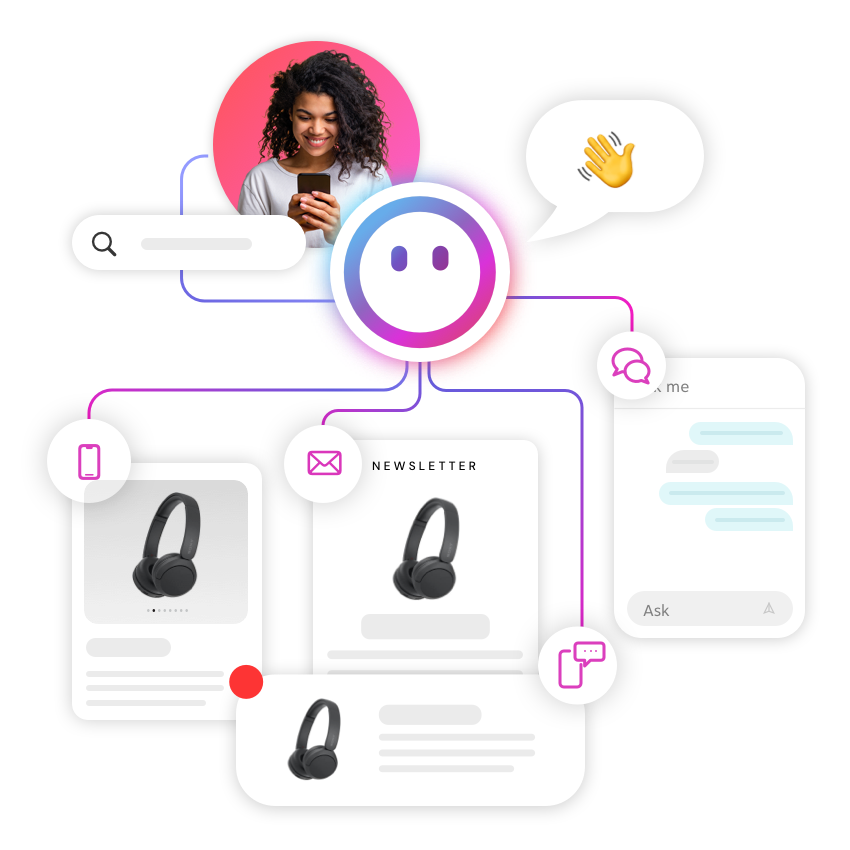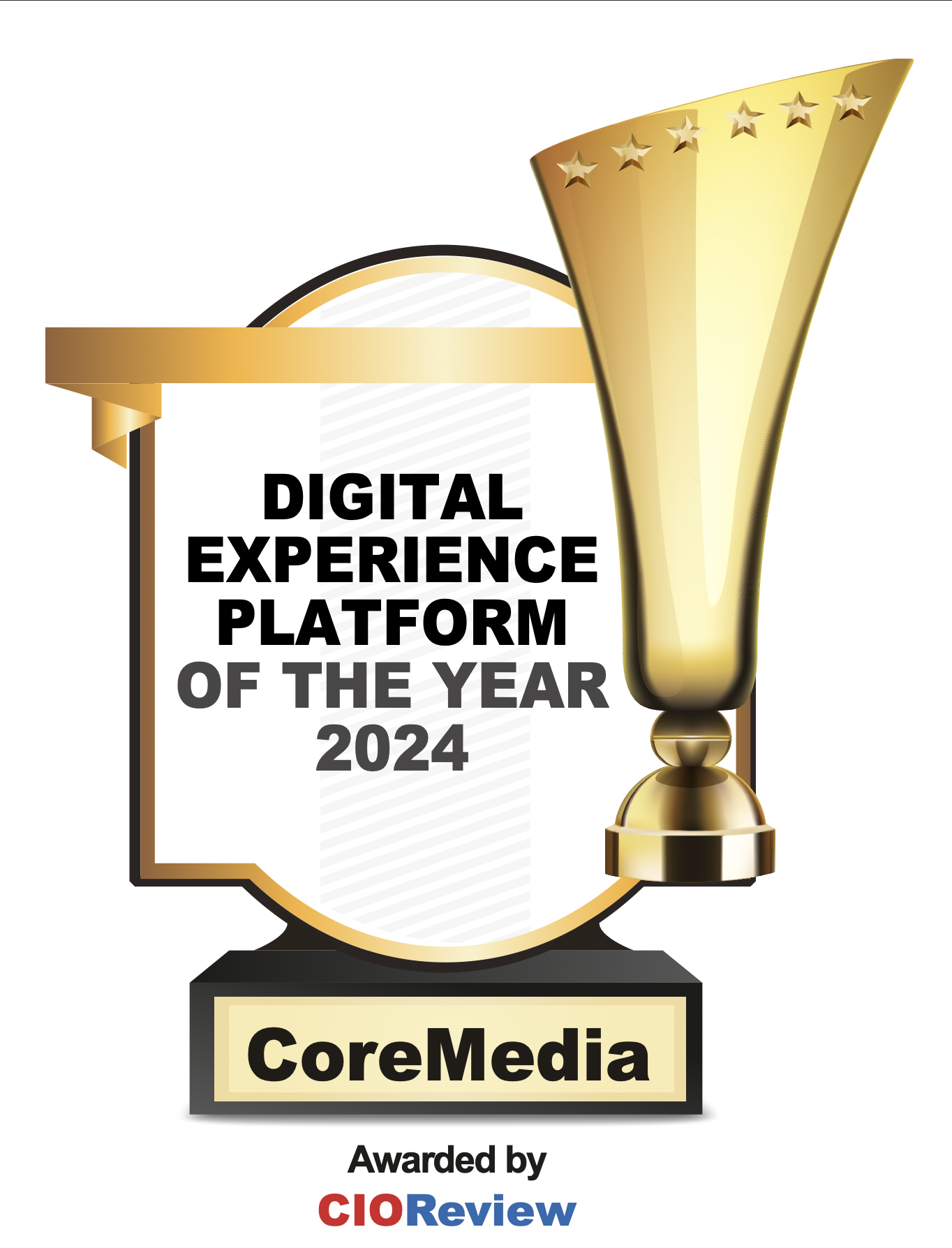Welcome to the inaugural edition of our quarterly series, the AI Thermometer, where we take a closer look at the advances in generative AI and its implications for enterprise-level companies, marketing teams, and content creators. In this dynamic era of rapid technological updates, AI has emerged as a game-changer, promising to revolutionize content creation and streamline marketing efforts — but it's not without its faults. How accurate are some of the claims that have been made? Let's take an AI temperature check and delve into the latest developments to see how AI is shaping the future of enterprise-scale content creation.
Streamlining customer-centric content
Generative AI, a subset of artificial intelligence focused on text, image, and media creation, has made remarkable strides in recent years. By leveraging machine learning models, like GPT-3 and its successors, AI-driven content creation tools can even produce human-like text, videos, and more. Enterprise businesses can now utilize these tools to automate repetitive tasks, increase productivity, and deliver personalized content at scale.
The marriage of AI with enterprise-level content creation unlocks a world of possibilities, specifically with enhanced productivity in mind. Marketing teams and content creators can now harness generative AI to augment their creativity, streamline workflows, and save time. According to a recent report by McKinsey, current generative AI technologies are estimated to have the potential to automate work activities that will absorb 60 to 70 percent of employees’ time today. And with AI-generated insights and data analytics, marketers can use those time savings to gain a deeper understanding of customer preferences, enabling targeted campaigns and content that resonates with audiences.
Optimizing SEO and Content Strategy
Search engine optimization (SEO) is crucial for driving organic traffic to a company's website. AI-powered content creation tools can analyze search trends, keywords, and user behavior, allowing marketing teams to create SEO-friendly content that ranks higher in search engine results. This data-driven approach ensures that the content is relevant, authoritative, and aligns with the company's overall content strategy.
In this era of information overload, consumers are bombarded with an abundance of content daily. This has led to content fatigue, making it challenging for companies to maintain their audience's attention. Generative AI aids in combatting this fatigue by generating fresh and engaging content consistently, keeping the audience interested and invested in the brand. With CoreMedia, unique integrations through partners like wonk.ai make it simple for marketers to create fresh, SEO optimized content, writing blog articles, generating taglines, and creating HTML metadata. The SummerizR service can even generate summaries and rephrase existing texts.
Multilingual Content Creation and Global Reach
In the modern business landscape, customer experience reigns supreme. Generative AI enables companies to tailor content to individual customers, addressing their specific needs and preferences. From personalized product recommendations to dynamic content curation, AI-driven marketing strategies create a more engaging and rewarding experience for consumers. According to a recent Harvard Business Review article, research shows AI makes a difference in boosting customer satisfaction when it's used to offer more personalized solutions, or aid human employees in providing better service than they would have without it, with companies in the financial services industry already experiencing early success.
Enterprise-level companies often operate in diverse markets, each with its language and cultural nuances. Generative AI has the capability to transcend language barriers and manage the ongoing explosion of content more efficiently than ever before, thereby empowering businesses to create high-quality content in multiple languages with ease. This would not only broadens their global reach but also foster better communication with international audiences.
Accessibility and inclusivity for all
But as it stands, generative AI hasn't yet reached its full potential on the multilingual content creation front. According to Wired, AI chatbots are decidedly less fluent in languages other than English, which causes a risk of amplifying existing bias in global commerce and innovation. And at least 15 research papers posted this year alone on arxiv.org, have sought to test the multilingualism of large language models, the software behind popular chatbot experiences, such as ChatGPT. The findings all reach one similar conclusion — while AI systems do a good job of translating other languages into English, they struggle with translating English into other languages, particularly those with lower resources.
OpenAI, the creator of ChatGPT, hasn’t exactly hid the fact its systems are biased. The company’s report card on GPT-4, its most advanced language model availble only to paid users of ChatGPT, even states that the majority of the underlying data came from English. OpenAI's efforts to tweak performance of the model focused primarily on English, even stipulating a “US-centric point of view.”
Algorithms built with the intent of countering the AI revolution aren't doing much better. According to a recent study out of Stanford University, algorithms designed to detect AI-generated content suffer from a bias against non-native English speakers. While the detectors were “near-perfect” in evaluating essays written by U.S.-born eighth-graders, they classified more than half of TOEFL (Test of English as a Foreign Language) essays (61.22%) written by non-native English students as AI-generated.
Combatting bias in e-commerce
One research study showed that a biases readily appear in AI-generated imagery. Using an AI tool, they asked for five steroetypically male and five stereotypically female faces. They then sent those into another AI tool to build their bodies. For the females, 52.5 perent of the images returned with a "bikini or low-cut top." For the males, 42.5 percent featured "suits of other career-specific attire."
Because generative-AI tools have trained on extremely large volumes of data scraped off the internet, they’re likely to reflect the internet’s biases. According to an article in Business of Fashion, this is something retailers must pay attention to. As companies begin using generative AI for everything from generating images for ad campaigns and in-store signage, they risk re-introducing discrimination based on race, body type, and ability that they've spent years claiming they want to move past.
Experts from MIT have suggested that one possible way to deal with the problem is reinforcement learning based on human feedback. This involves equipping an AI model with feedback, in order to guide its learning in a specific direction. Ultimately, this would be done without a human having to stipulate a desired outcome.
The Power of Collaboration: Humans and AI
One of the most exciting aspects of AI in enterprise content creation is the potential for human-AI collaboration. While AI can perform tasks with unparalleled speed and efficiency, it is the human touch that brings authenticity, emotions, and empathy to content. By combining the imaginative prowess of content creators with AI's data-driven insights, businesses can weave compelling narratives that resonate deeply with audiences.
Enterprises must invest in comprehensive AI education and training for their teams to harness the technology effectively. Additionally, fostering a culture that embraces AI experimentation and innovation is crucial to unleashing its full potential.
The expanding role of AI in content creation also neccessitates finding an answer to some of the issues posed above. As AI-generated content becomes more prevalent, businesses must actively address issues and not just of bias, but also regarding misinformation and data privacy. Proactive measures, along with industry-wide standards, are imperative to ensure responsible and ethical AI practices, and are seemingly still to come.
***
Stay tuned for the next installment of the AI Thermometer. We'll dive deeper into how AI can make substantive changes, and have a look back at what's worked (and what hasn't) in 2023. With this advancement in technology comes the knowledge that we're shaping a future where creativity has no limits, and the way businesses create content on a large scale has already changed forever. So, stay curious as we explore the possibilites of AI together!








